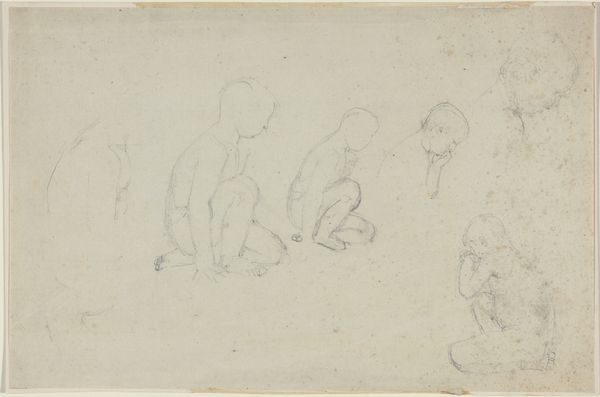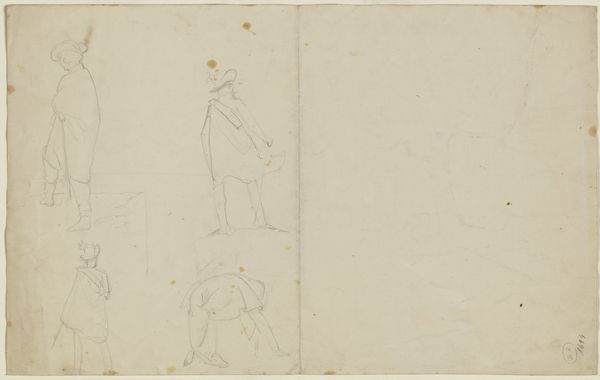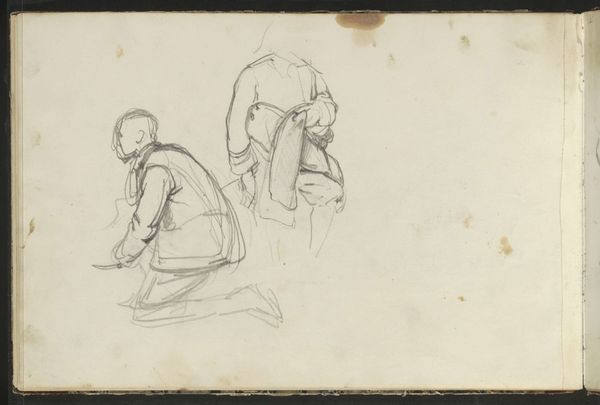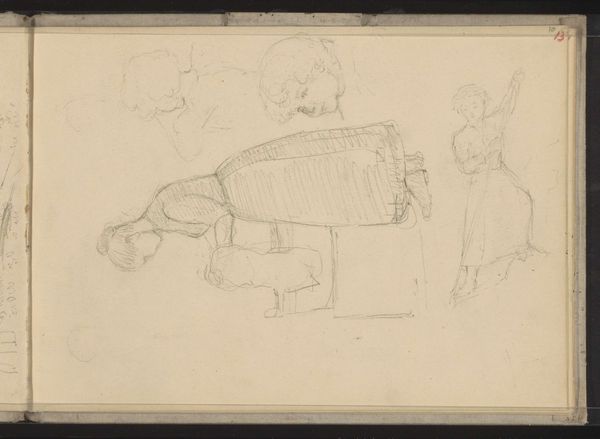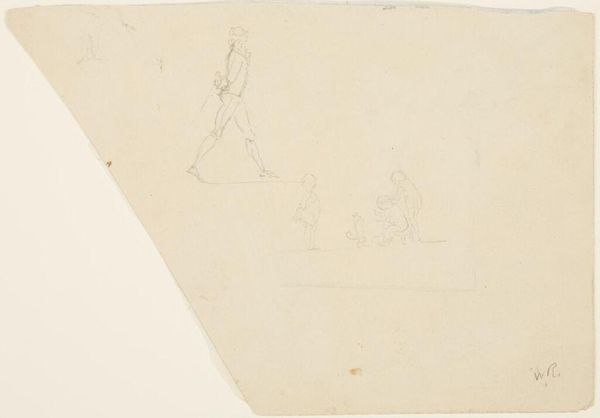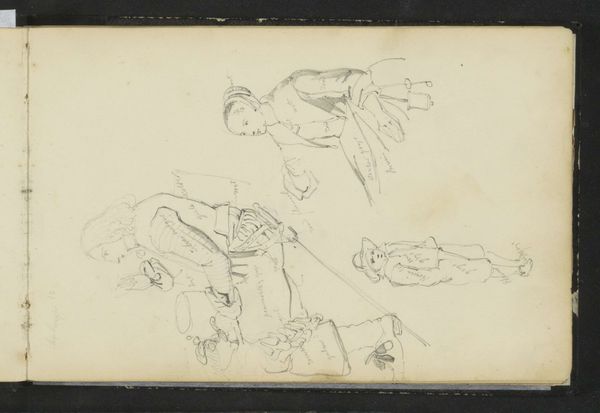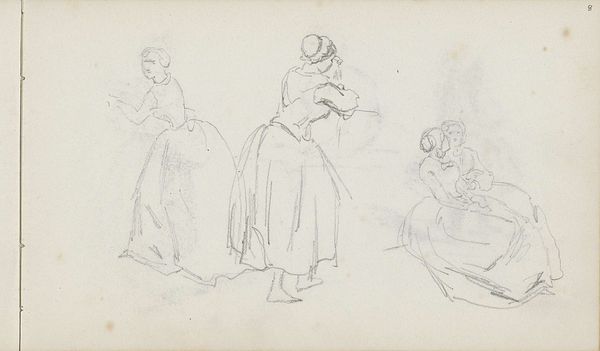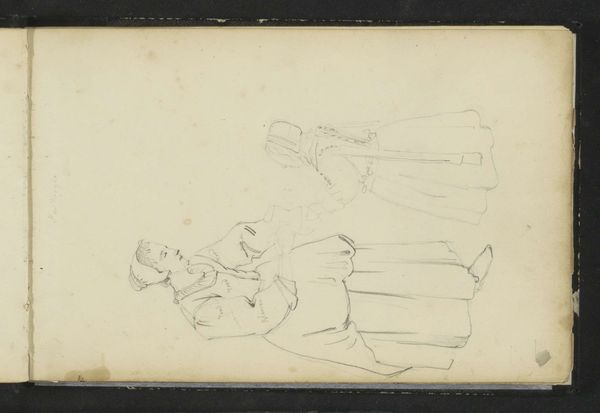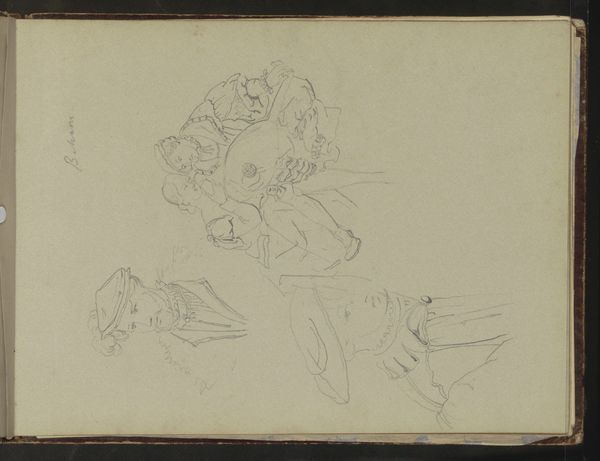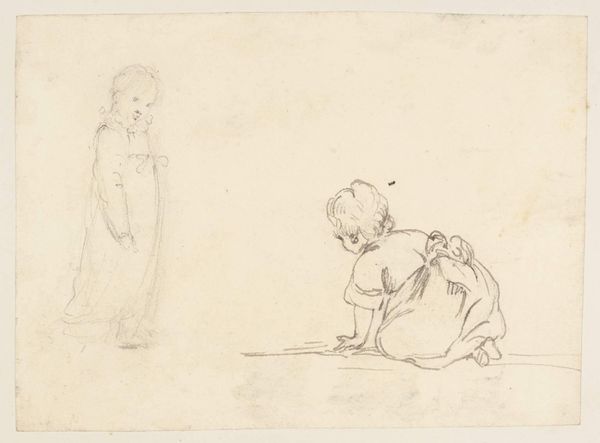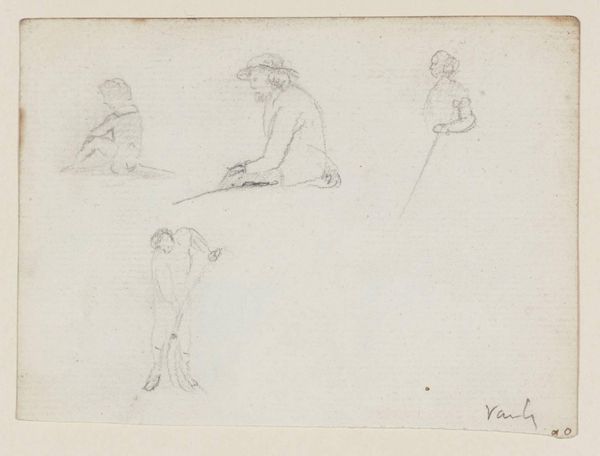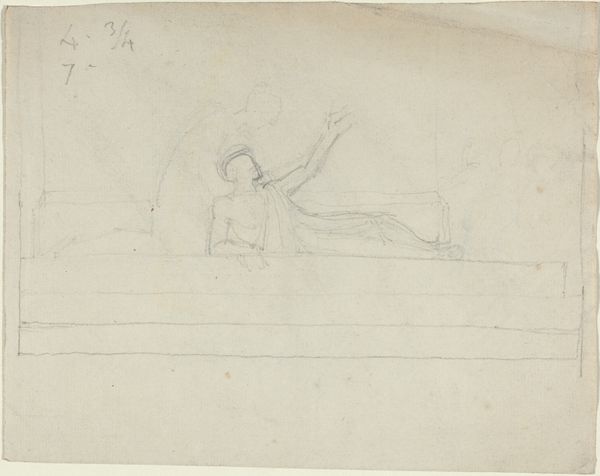
Staande jongen en een zittend kind met een schrijfplank 1827 - 1891
0:00
0:00
johannesbosboom
Rijksmuseum
drawing, paper, pencil
#
portrait
#
drawing
#
figuration
#
paper
#
child
#
pencil
#
line
#
genre-painting
Copyright: Rijks Museum: Open Domain
Curator: This sketch by Johannes Bosboom, made sometime between 1827 and 1891, captures two children: a standing boy and a seated child holding a writing tablet. The work, titled "Standing Boy and a Seated Child with a Writing Board," is rendered in pencil on paper and currently resides here at the Rijksmuseum. Editor: My immediate reaction is a sense of melancholy. The lightness of the pencil strokes combined with the understated subject matter gives it a quiet, almost mournful quality. It's interesting how the artist focuses on such a simple, everyday scene. Curator: Indeed. Bosboom was celebrated for his genre paintings, often focusing on unassuming scenes like this. However, beyond a mere record of everyday life, one can discern elements that challenge typical portrayals of childhood during this era. Consider the social implications. Editor: I agree, it is a glimpse into the educational system during that time and how education was impacting children and their access to social mobility. There's something particularly poignant about the contrast between the active, perhaps older, boy and the seated child, who appears engaged in the act of learning. It prompts reflections on accessibility, privilege, and the burdens or aspirations projected onto the younger generation. Curator: Note the delicate linework, especially around the children’s faces and clothing. Bosboom masterfully conveys form and texture using minimal strokes. Observe how line is used to emphasize certain contours—the seated child’s bowed head, the other’s tentative stance. It speaks volumes about their attitudes in this scene. The materiality of the work is central to its interpretation: the tooth of the paper, the bluntness of the pencil, the subtle shading—each aspect contributing to a tangible sense of being. Editor: Absolutely, it brings to the surface so much related to societal expectations, intellectual confinement, or perhaps even empowerment of that time. It invites the audience to look beyond the immediate image and interrogate what is unspoken within it. The visual narrative certainly sparks significant dialogues, questioning established assumptions, and providing a window into critical historical insights about learning in this time. Curator: Ultimately, Bosboom offers not a definitive statement, but an exploration of form and light— inviting viewers to draw their own conclusions. Editor: Precisely, and through these interpretations, it is easy to begin to think more about what educational barriers we can continue to challenge.
Comments
No comments
Be the first to comment and join the conversation on the ultimate creative platform.
